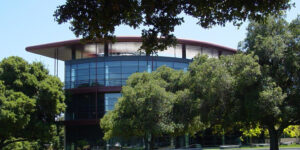Tag: Presentation
-

Open Source im Blickpunkt der Politik (Video, in German)
In diesem kurzen Video erkläre ich die Bedeutung der Softwareindustrie für die Wirtschaft eines Landes und wie Open-Source-Software diese stärken kann. Es richtet sich an Public-Policy-Maker und alle interessierten Personen. Die englische Version dieses Videos folgt; die Folien wurden vom FAU Sprachdienst aus dem Englischen ins Deutsche übersetzt (und von mir nachkorrigiert). Neben obigem Youtube…
-

Single-Vendor Open Source Firms and Intellectual Property Strategies (Video)
In this video, I explain the single-vendor open source business model (also: multi-licensing, open core) and in particular its intellectual property strategies. This talk is partly a reaction to the recent licensing changes by commercial open source firms and the resulting confusion. An upcoming article will go into more detail next year. Next to the…
-

Enabling Open Innovation with Open Data using the JValue Open Data Service
Today I gave my JValue Open Data Service talk at USM (University of Sciences, Malaysia, at Penang). I am grateful for the opportunity and the recording. Abstract: Open data has the potential to create significant practical value for its users through open innovation. Yet, to realize this value, we need an open ecosystem, next to…
-

Single-Vendor Open Source at the Crossroads (Slides) #lfosls
I’ll be giving a presentation on single-vendor open source today at the Linux Foundation Open Source Leadership Summit 2019. Abstract: Most venture capital funding in open source flows to single-vendor open source firms. With the struggles over licensing in the cloud, these companies find themselves at the crossroads: Stay true to open source or move…
-

The Innovations of Open Source colloquium talk at University of Hamburg
Update 2019-01-30: The talk slides and a video recording (local copy) are available now. I got invited and will be presenting a talk in the colloquium of the computer science department at the University of Hamburg tomorrow, January 28th, 2019, at 17:00 Uhr. The talk topic are the innovations of open source and I will present…
-

Ten years of inner source case studies (video)
Georg Grütter of Bosch recorded my keynote at the Inner Source Commons summit in Renningen, Germany, on May 16th, 2018, and put it on Youtube. Please watch it below (original video, local copy). According to Georg, the video is licensed under CC BY-SA 3.0 (for the Bosch part) and I agree (for my part). Hence…



